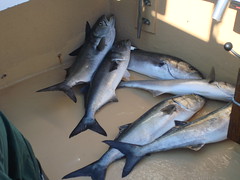Whither the Riverkeeper?
Cronin loved publicity, and was something of a genius about getting press attention for Hudson River issues. He just happened to operate on his own schedule and according to his own priorities, and that meant if you called him on a Monday you might expect to hear back from him the following Monday. Once I learned this, it was no big deal -- I just timed my calls accordingly, which I was happy to do because he knew what reporters needed and was happy to dole out the strong opinions and relevant anecdotes on cue, or I found someone else to call when I was on deadline.
Out of the blue late last night, John emailed me. He's the head of the Beacon Institute for Rivers and Estuaries, in Beacon, N.Y. (another old friend and colleague, Marc Moran, is the chief operating officer). John also has a sort-of blog -- I say 'sort-of' because he's not using the traditional blog format.
In my opinion, John is one of the most important figures in modern environmental advocacy. I was bummed when a rift occurred at Riverkeeper that prompted him to quit and Bobby Kennedy Jr. to feud with Bob Boyle and eventually oust him as head of the organization (although I remember, about four years before John quit, he told me he was exhausted and didn't intend to be Riverkeeper forever and, a couple of years later, him empasizing to me twice in an interview that Bobby worked for him, so the end was in sight for a while before it happened. But I digress...)
John cares deeply about the river and environmental issues, and always had thoughtful and insightful things to say. His blog, or whatever you want to call it, is here.
John, by the way, was the second of three Hudson Riverkeepers. Tom Whyatt, who is now an environmental attorney, was the first; after he was Riverkeeper, Tom was the executive director of Westchester Land Trust (I'm now the acting executive director); Alex Matthiessen is the third.
Labels: Hudson River, Riverkeeper









